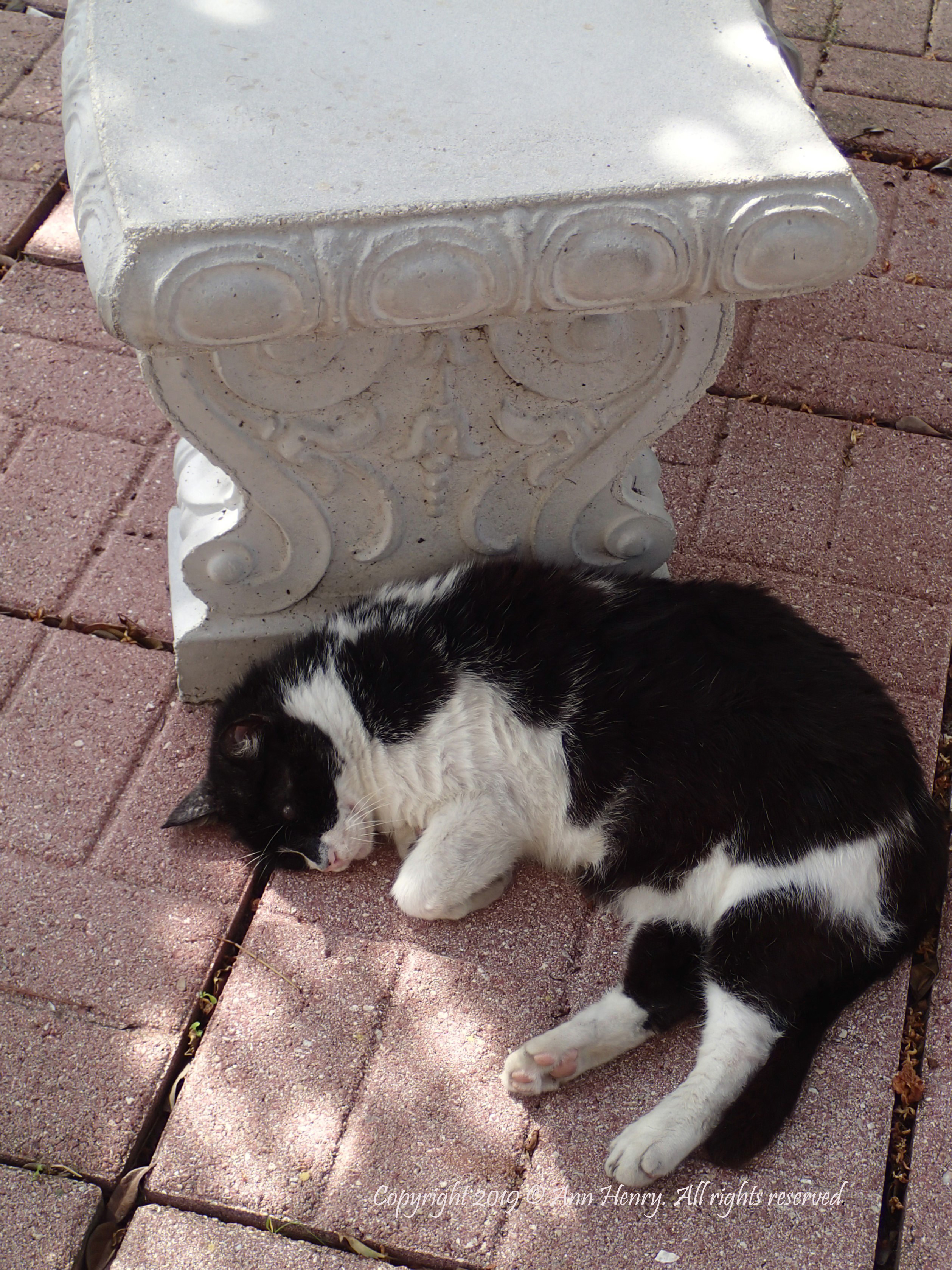While crossing a patio, I took a photo of a black-and-white cat lying by a concrete bench.
Oops! I meant “a black-and-white cat, curled like a quarter moon as he slept on the brick patio with one paw tucked under his chest while his shoulders snugged up against the carved support of a concrete bench.”
We writers often fall back on the first adjective that comes to mind while writing a novel or short story. Words like “small” or “large” (how small or large? compared to what?) and “beautiful” or “ugly” (how? in what way?) come to mind, and we jot them down in our copy and continue blithely on with the story, thinking no more about it as though having told the reader that “she was a pretty girl” or that “it was an ugly apartment building” is all the reader needs to know. And maybe it is, but this type of description does little to pull the reader farther into the story.
Describing a character as “a slender teenage blonde with a quirky smile and bouncy step” does far more to help the reader picture this character than merely saying that she’s “a pretty girl.” And “the five-story brick walk-up with graffiti obscuring its soot-covered walls” helps place the reader at the scene far better than merely describing the building as being “ugly.”
In the novel Beatrice and Virgil, author Yann Martel has Virgil yen for a pear, a “ripe and juicy one,” then describe it to Beatrice, who has never seen or tasted a pear. Already, by using “ripe and juicy,” Virgil is being more specific than merely saying he’d like a “good pear.” But then he goes on to describe its size, shape, and color; the texture of its skin; its aroma; the texture of its flesh; and how its taste sensually affects its consumer. In the end, Virgil confesses that he “can’t put it into words” when it comes to the taste of a pear. But he has nonetheless done an excellent job of making that pear “concrete” for Beatrice.
This is not to say that you should go to such a lengthy and complex extent to describe every person, place, or thing that is important in your fiction, but when your characters and settings are worth detailed description to enhance the story, don’t rely on vague, overused adjectives like “beautiful” and “wonderful.” A few specific details that describe in what way the character or setting is “beautiful” or “wonderful” will do the trick without your ever having to employ these overused words.
So, by all means, have your character “save the cat,” but not just any ole cat: “a lithe, young gray cat with white ‘boots’ and a tail that stands at attention with the tip slightly bent while he focuses his golden eyes on a lizard in the grass.”
Now forget about the cat and go save your story with some solid, specific, detailed description. Your readers will enjoy your story even more if you do.
© 2019 Ann Henry, all rights reserved.
Photo: Puss and Bench © 2019 Ann Henry, all rights reserved.
